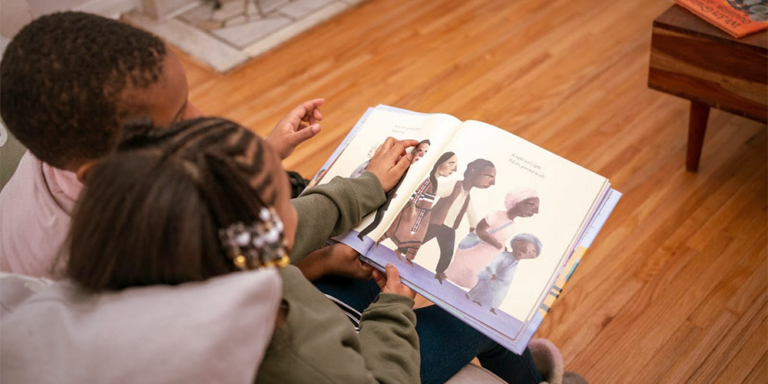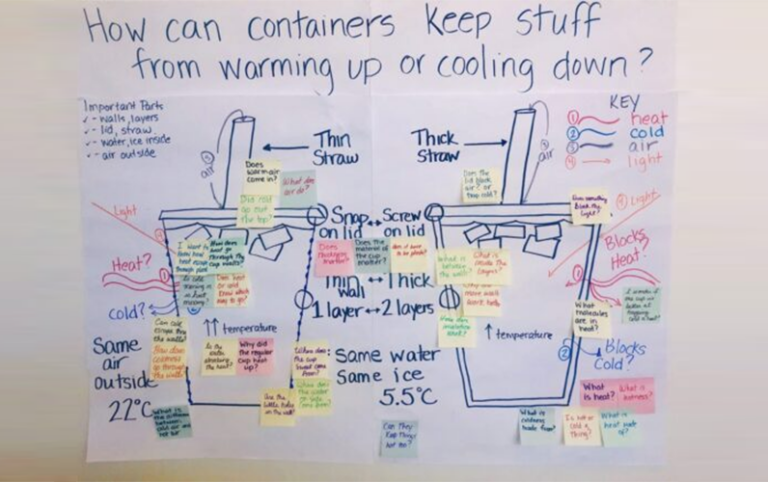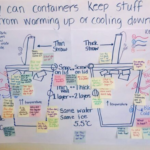According to the American Psychiatric Association, “Autism spectrum disorder (ASD) is a complex developmental condition that involves persistent challenges in social interaction, speech and nonverbal communication, and restricted/repetitive behaviors.”
Every student comes to class with their own needs and learning styles, but students with ASD have a unique set of challenges that impact their ability to communicate, socialize, and handle changes or unfamiliar stimuli. In this article, we’ll discuss some targeted strategies for welcoming these students into your general population classroom, from Reading Rockets and the International Board of Credentialing and Continuing Education Standards.
Scheduling Considerations
Let your students know what to expect throughout the day.
Especially when they enjoy an activity, students with ASD can experience stress or disorientation when it’s time to move on to a new task or a different room or area in the classroom. That’s why it’s helpful to tell students in advance what they can expect, including the amount of time involved. For example, you might say, “We’re going to do our reading lesson for 30 minutes, and then we’ll stand up and get our science supplies.”
Because ASD can also cause language difficulties, visual cues can be especially helpful. For example, you might hang a poster on the wall showing your class schedule, including times and pictures of each activity. Or when you’re winding down an activity, you might put a sand timer next to the student and say, “When the sand reaches the bottom, it will be time to turn off the computer.”
Provide extra support during transitions.
Even when students with ASD know the schedule, it can be emotionally challenging to leave a familiar activity for a new one. Providing extra support during these times can help students succeed. For example, you might ease students into the next activity by giving them a visual signal of what they can expect next (e.g., holding up a manipulative to show them it’s time for math).
IBCCES also recommends allowing students with ASD to bring an object to help them transition from one activity to the next. For example, if it’s time to leave the classroom to go to a special area, let students bring a favorite book or object from the classroom to give them a sense of familiarity in the new place.
Give students breaks.
Some students with ASD benefit from being able to take a break between tasks. A break might be as simple as standing and stretching, or might involve walking around the classroom or up and down the hallway a few times. But these breaks don’t have to be disruptive: Reading Rockets says that breaks can benefit all your students, and recommends giving students a question prompt and then letting them walk and discuss with a partner.
Environmental Considerations
Create a comfortable classroom.
One of the hallmarks of ASD is atypical responses to stimuli. That means your students with ASD might find visual, auditory, or tactile input overwhelming or hard to process. Typically, the best way to help is to limit the number or intensity of stimuli in your classroom to minimize distractions. Reading Rockets recommends providing students with a visor and headphones to limit the intrusiveness of bright lights and loud sounds. Another way to help your students with ASD feel comfortable is to provide alternate seating options that allow for fidgeting and movement (e.g., beanbag chairs, rocking chairs, stability balls, wobble seats).
Give students a quiet space to de-stress when they’re overstimulated.
There’s only so much you can do to shield your students from external stimuli—especially outside your classroom. That’s why it’s helpful to have a spot where students can remove themselves to when they feel overwhelmed. EducationAndBehavior.com recommends designating a clearly defined area or corner of the classroom where (a) the walls are bare, (b) there are comforting sensory or fidget items, and (c) students can take movement breaks.
Help your students stay organized.
Not all students with ASD have a hard time with organization, but for those who do, they benefit from reminders about what it means to keep their desks and materials neat, and when it’s time to tidy up. Reading Rockets says when it comes to organizational help, you don’t have to single out your ASD students. Rather, your whole class will benefit from taking a few minutes to copy down assignments, organize papers in their folders, and clean and put away learning materials.
Social Considerations
Let your students tell you about themselves.
When students with special needs enter your classroom, they often come with a hefty IEP and other supporting documents to help you understand their needs. However, don’t let the paperwork distract you from the real person sitting in front of you. Although it might take time to gain some students’ trust, make sure to keep asking students what their needs and desires are. Doing so will build your relationship and help students feel a sense of autonomy and responsibility in the classroom.
Include students with ASD in class activities and discussions.
Students with ASD may struggle with verbal communication and responding appropriately to social cues. But that doesn’t mean they should be excused from doing so. Rather, students with ASD benefit from being around their peers and practicing these skills. When planning class discussions and small-group activities, make sure to structure them in a way that gives all students an opportunity to contribute—even the quiet ones. To help students with ASD be successful in these situations, tell them exactly what’s going to happen, communicate your expectations, and give them plenty of time to think and construct their responses.
Model social skills and celebrating students’ strengths.
According to Ferris State University, most students with ASD want friends but lack social skills that neurotypical people pick up on intuitively. Students with ASD benefit from having direct instruction on social “rules” and practicing through observation and role-playing.
On the other side of the equation, teachers can prepare the rest of the class to accept their peers with ASD by emphasizing their strengths as a classmate in collaborative activities.
Pedagogical Considerations
Give students choices.
Giving choices is a great pedagogical strategy for students of any ability. It gives students a healthy sense of control and also lets them play to their strengths—and students with ASD absolutely have plenty of strengths.
One marker of people with ASD is that they have deep interests in certain topics—sometimes called fascinations or, more negatively, obsessions. Rather than trying to pull students away from these interests, lean into them. See if you can incorporate the interest or use it to challenge students to do new things.
For example, the Autism Awareness Centre shares a story about one teacher who used a student’s fascination with weather to inspire him to look up weather predictions in the newspaper. Eventually, the student began to read the entire paper—something he never would have done before. Another teacher used a student’s fascination with the calendar to challenge the whole class to look up important dates in American history. She then had the student with ASD present these events at the beginning of each day as a way to practice public speaking.
Consider handwriting alternatives.
Students with ASD often struggle with motor skills, and in the classroom, this issue presents itself most in handwriting. Obviously, writing is an essential life skill, so students with ASD should have ample opportunities to practice, even if it’s just a few words or sentences at a time. However, in instances where learning content is the goal, not practicing penmanship, consider letting students type their answers rather than get bogged down in handwriting.
Be clear, concrete, and concise with directions.
Euphemisms and vague directions are not helpful for students with ASD. For example, instead of saying, “Be on your best behavior in the hallway,” you might say, “Walk directly behind the person in front of you in line, and don’t talk until we get to the next room.” Also make sure not to overwhelm students with too many details. Especially if your students struggle with language, it’s beneficial to focus on what’s happening now and what will happen next, rather than bogging them down with possibilities that may never happen.






